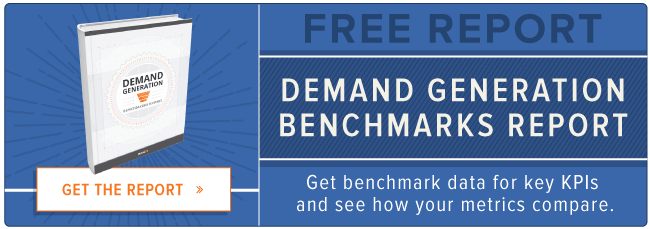In an ideal world, marketers would have limitless budgets to invest in experimental initiatives and new programs. After all, the customer acquisition and retention landscape is evolving faster than ever. To see what works, it’s crucial to find new opportunities and test new waters.
The challenge, however, is that marketing budgets are often limited around what’s "proven" to work -- which tends to look different from company to company. That’s why it’s so important to have access to industry data. By knowing where we stand against our peers and competitors, we’re better positioned to uncover areas of opportunity.
HubSpot’s 2015 Demand Generation Benchmarks Report addresses this exact challenge by asking marketers to nominate their top marketing investments by budget. Here are trends and distribution of responses for four industries: consumer products, information technology, financial services, and software.
1) Consumer Products (CPG) marketers rank branding and public relations, social media marketing, and online advertising among their top marketing investments. Inbound techniques like marketing automation/lead management and content creation are a smaller part of the mix. (Tweet This Stat)
Right off the bat, what’s important to note about any of these trends is that budget does not necessarily correspond to effort. CPG companies could be investing a high amount of effort in content creation, even though they aren't investing a high amount of financial resources. We also know from HubSpot's State of Inbound Marketing Report that inbound marketing tends to cost less than traditional outbound tactics.
At the end of the day, CPG marketers need healthy levels of investment across multiple marketing channels. With search and discovery being the heart and soul of online shopping, it’s critical to reach the right audiences with the right messages at the right times in their buying journeys. Brands can improve efficiencies by nurturing and sustaining their relationships over time, through inbound techniques like marketing automation and content creation.
2) Information Technology & Services companies are investing in content creation, branding, public relations, trade shows, and email marketing. Marketing automation/lead management, however, remain a smaller part of the mix. (Tweet this Stat)
Paths to conversion are often complex in the IT industry. Stakeholders will sometimes spend months -- even years -- evaluating potential vendors before making a final decision. Website design/optimization, content creation, and even trade shows/events can be steps in the right direction because they provide core, educational value to target audiences.
These initiatives, however, require counterbalancing through marketing automation and lead nurturing. Because prospects are often involving multiple teams to evaluate the compliance and technology capabilities of an IT product, one-off email marketing campaigns won’t be efficient in reducing customer acquisition costs and increasing ROI. The biggest area of opportunity for IT companies is to increase investment in marketing automation and lead management -- a channel that connects the dots between website optimization, content creation, trade shows and events, and even branding and PR.
3) Financial services firms have the potential to become inbound powerhouses. (Tweet this Stat)
Financial services firms, according to the data, are already investing in inbound systems through content creation and marketing automation/lead management systems.
Branding and PR, especially for a competitive industry like financial services, will always be expensive. By nurturing relationships, inbound channels will help marketers make more out of their limited budgets.
4) Software companies are more likely than other industries to rank inbound marketing techniques like marketing automation/lead management and content creation among their top marketing investments. They’re also investing less in traditional advertising. (Tweet this Stat)
Software companies are investing more heavily than other industries in inbound techniques. Inbound marketing through automation/lead management connects the dots between otherwise dissociated marketing efforts like trade shows and email marketing.
Software companies are becoming increasingly dependent on subscription models for customer success, which means that inbound marketing will become an increasingly powerful growth driver. As an acquisition and retention mechanism, it’s one of the most powerful ways to forge relationships at scale.
Looking for more benchmark data to influence your marketing plans? Check out HubSpot’s 2015 Demand Generation Benchmarks Report -- it's full of great stats for each phase of the funnel.

No comments:
Post a Comment